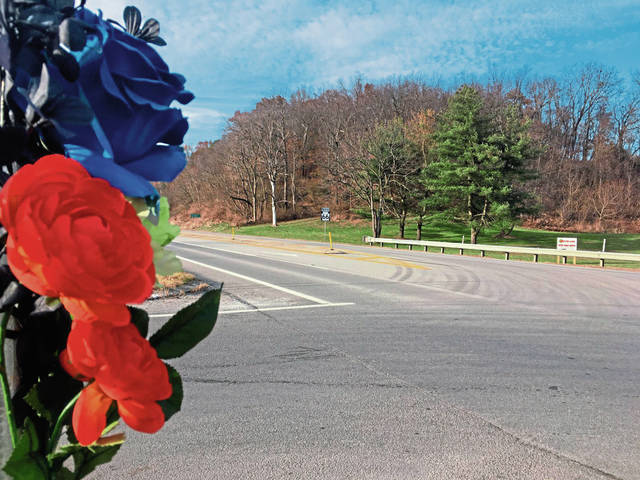Officials hope changes at Routes 66, 366 make intersection safer
The flowers of a makeshift memorial at a Washington Township intersection where a Brackenridge woman died in a July 27 crash haven’t faded yet.
The fatal crash happened when Haley Montgomery’s northbound car tried to turn left from Route 66 onto Route 366 but was struck by an oncoming SUV.
Other drivers have made the same fatal mistake over the years, officials said.
After fielding complaints about the intersection, state Rep. Joe Petrarca, D-Washington Township, said he contacted PennDOT this year to request a traffic study and help to make the intersection safer.
Earlier this month, PennDOT eliminated one lane in each direction of Route 66 at the intersection with Route 366, reducing it to one lane in each direction. The agency also reduced the speed limit from 55 mph to 45 mph in the area.
“I hope this is an adequate fix and makes a dangerous situation better,” Petrarca said.
Washington Township Supervisors Chairman Rich Gardner said he believes it’s up to PennDOT to make the intersection safer since it involves two state roads.
“Time will tell whether the elimination of lanes will alleviate the problem,” Gardner said.
Washington Township police Chief Scott Slagle blamed some crashes that happened years ago on motorists on Route 366 “blowing through the stop sign” because the intersection was not well lighted.
A flashing light was installed along with rumble strips to address the problem.
“Where we seem to be having trouble is with cars that are northbound on 66 making a left turn onto 366,” said Slagle, who has been chief for 23 years.
“The serious accidents have been cross-traffic,” Slagle said. “It’s a tough intersection to navigate.”
Bryan Walker, district traffic engineer for PennDOT’s District 12, said all approaches and turning movements at the intersection were examined in a recent safety study. And he, like Slagle, found that the biggest danger was for motorists trying to making left-hand turns from Route 66 onto Route 366.
Walker said some motorists “were not able to effectively judge speeds of traffic coming at them, and that is not necessarily addressed by a traffic signal.”
Currently, no studies are planned to weigh the merits of installing a traffic signal at the intersection.
Remove the ads from your TribLIVE reading experience but still support the journalists who create the content with TribLIVE Ad-Free.

